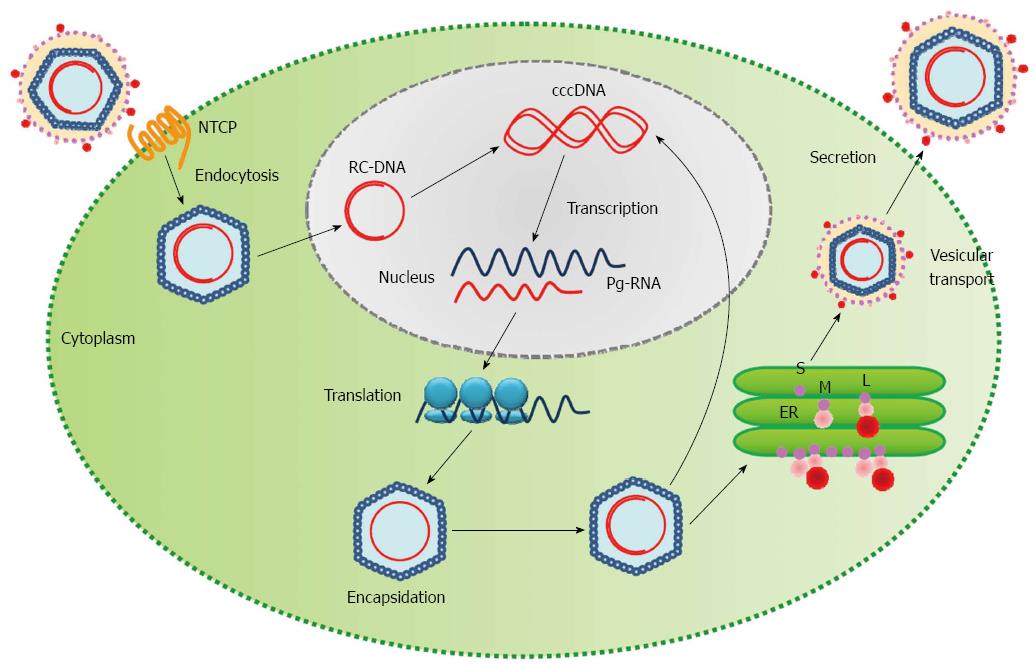Copyright
©The Author(s) 2015.
World J Gastroenterol. Nov 14, 2015; 21(42): 12157-12170
Published online Nov 14, 2015. doi: 10.3748/wjg.v21.i42.12157
Published online Nov 14, 2015. doi: 10.3748/wjg.v21.i42.12157
Figure 4 Life cycle of the hepatitis B virus.
HBV enters the hepatocyte and is uncoated in the cytoplasm. The relaxed-circular viral DNA (RC-DNA) is released from the nucleocapsid into the host nucleus and is converted into covalently closed circular DNA (cccDNA). The cccDNA acts as a template for transcription of pregenomic virion RNAs (Pg-RNA). Pg-RNA is then transferred into the cytoplasm, bound by viral polymerase and encapsidated. Inside the nucleocapsid, the Pg-RNA is reverse transcribed into RC-DNA, where either the RC-DNA can be released back into the host nucleus for amplification of viral DNA or the entire nucleocapsid can be transferred into the endoplasmic reticulum (ER) for viral surface protein coating and ultimately released from the cell[13]. S: Small surface protein; M: Middle surface protein; L: Large surface protein; HBV: Hepatitis B viral.
- Citation: Chiu AP, Tschida BR, Lo LH, Moriarity BS, Rowlands DK, Largaespada DA, Keng VW. Transposon mouse models to elucidate the genetic mechanisms of hepatitis B viral induced hepatocellular carcinoma. World J Gastroenterol 2015; 21(42): 12157-12170
- URL: https://www.wjgnet.com/1007-9327/full/v21/i42/12157.htm
- DOI: https://dx.doi.org/10.3748/wjg.v21.i42.12157









